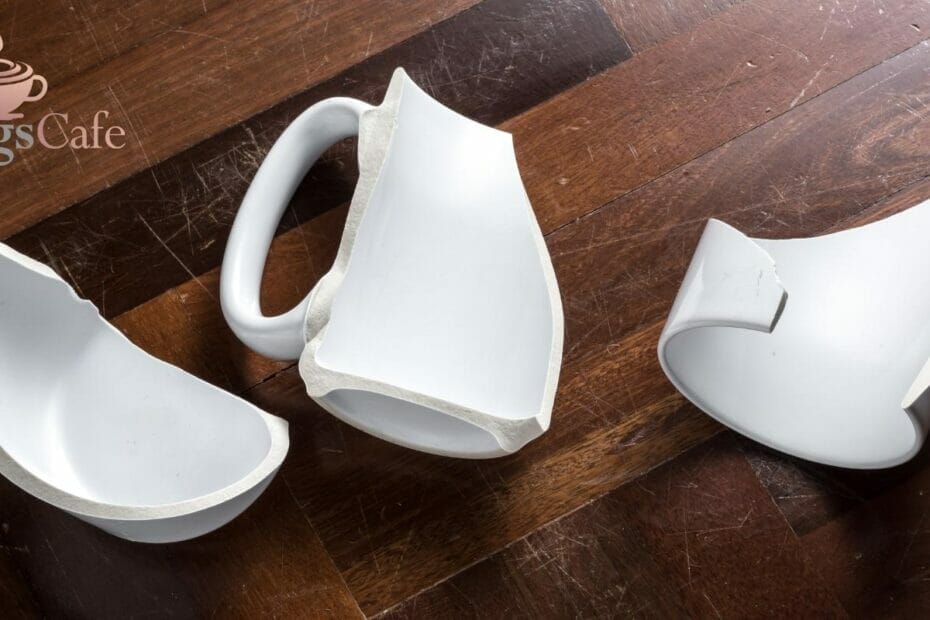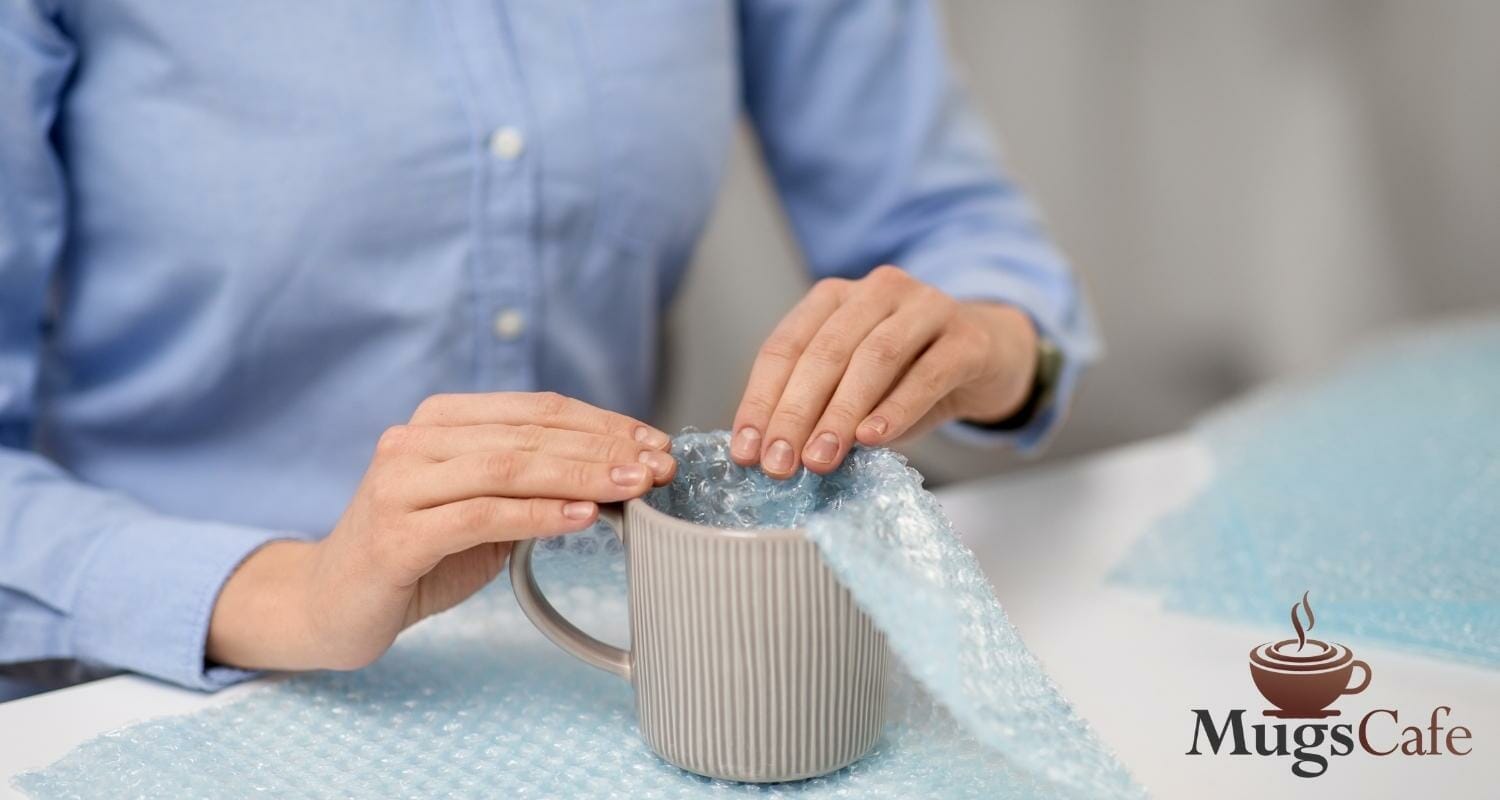How to repair a broken ceramic coffee mug – full details
Fixing a broken coffee mug is easy. There are many different methods for fixing your favorite coffee mug, and all of them are effective in their ways.
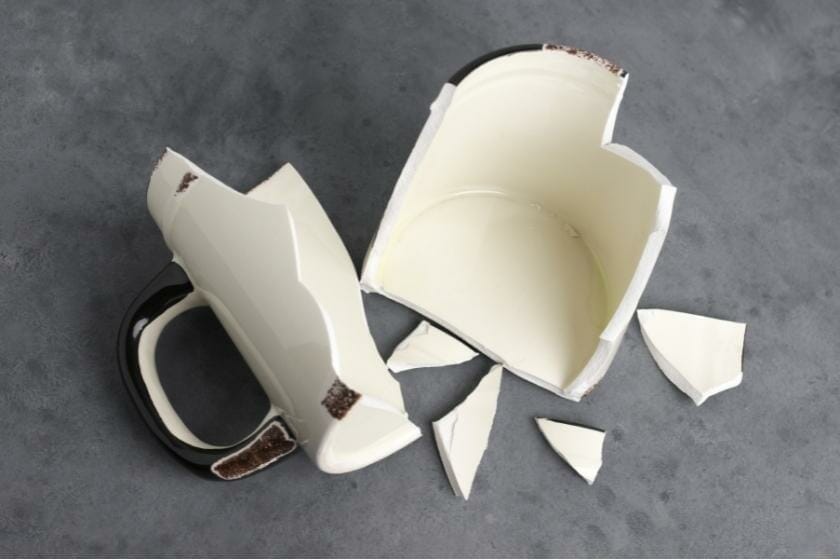
- You can use glue or epoxy to repair the break by applying it with a toothpick, dabbing it on with your finger, or even pouring it directly onto the broken area. The glue will set quickly and then allow you to handle your mug again within an hour or two, depending on how much you used and how thick a layer you applied.
- If you want something more substantial than just glue alone but don’t have time to wait for the epoxy to dry completely before handling your mug again, consider using an adhesive kit instead of just one type of adhesive material! These kits typically include not only some kind of super-strong epoxy resin but also brushes explicitly made for applying adhesives like these so that they’re more accessible than ever before! Plus, there’s usually some sealant included which makes anything else seem old-fashioned at best!
- Another option would be using food-safe materials like silicone putty (which come in different colors), petroleum jelly (which can be found locally!), or even hot melt glues, which require both heating up and cooling down times before being able to use again safely so make sure not too much gets spilled! You’ll still need something sturdy enough since this method will leave residue behind after usage; otherwise, try adding some kind.
Instructions for the repair of a ceramic broken coffee mug
- Boil the ceramic coffee cups in a pot of water and let them soak in the cracks.
- Using all-purpose cyanoacrylate glue (superglue), apply a thin layer at the bottom of your mug or at the spot where you think it needs to be repaired.
- Let it dry for 24 hours before using it again, and keep it away from children as this can be harmful if ingested!
- If you want an alternative, try using low-viscosity cyanoacrylate glue instead!
How to fix a broken handle on a coffee mug
If the handle on your favorite coffee mug has broken off and you don’t want to buy a new one, there are a few things you can do.
First, fill a pan with milk and heat it until it boils. Use some tongs to remove the hot pan from the stovetop, then pour the scalding hot milk over the cracks in your mug handle.
Let this sit for about five minutes until it cools down enough that you can touch it without burning yourself (be careful!). Then rinse off both sides of the mug and let them dry completely before trying another fix if necessary.
How to attach a handle to a coffee mug
- Using All-Purpose Cyanoacrylate Glue
CA glue is a valuable tool to have around the house for fixing things like broken plates, torn posters, and more. You can purchase it at any hardware store or online. To repair your mug using CA glue:
- Prepare a small amount of the glue in a bowl, using distilled water as an adhesive. If you don’t have filtered water on hand, use tap water instead, but be sure to let it sit overnight so any sediment settles before using it in this way (you can filter out any remaining sediment with coffee filters).
- Apply some of the diluted glue to both sides of your broken mug where they meet each other, and let them dry completely before trying to fix anything else! Don’t forget that if you’re using an epoxy-based product like Loctite 454 instead, it needs 24 hours before being fully cured, so don’t rush into recycling until then!
Method 1: Simple Attachment
Here’s another method that you might be able to use. If your mug is still in one piece, but there are just a few cracks or scratches, then this method should work for you.
You’ll need some low viscosity cyanoacrylate glue (known as superglue).
First, apply the glue with a toothpick or Q-tip to fill in any cracks and make them invisible again. Wait until the glue has dried, and then repeat as needed until all of the gaps have been filled with glue. Once all of your mugs are fixed up, remove any excess adhesive with an old credit card or similar tool (don’t use anything sharp!)
Method 2: using “biscuit” joints
If you’re looking for a more DIY approach, why not use the Japanese Kintsugi Repair DIY Kit? This kit comes with instructions on how to repair your broken ceramics using a “biscuit” joint technique. Kintsugi, or Kintsukuroi (meaning “golden joinery”), is the traditional art of repairing broken ceramic ware with lacquer mixed with gold powder and other precious materials.
A biscuit joint is an interlocking structure that provides support while being less visually intrusive than other methods, such as gluing or welding.
A biscuit joint is usually made of wood. It has been around since the early 19th century, when it was used as an alternative to metal fasteners in furniture making and carpentry.
The wood biscuit itself can be made from many kinds of woods, including oak, maple, walnut, and mahogany, but now there are also steel or plastic versions available!
Method 3: using pin joints
A food-safe epoxy resin kit is a two-part epoxy resin that comes in an easy-to-use syringe. It’s one of the efficient methods for fixing broken mugs but is useful for other household repairs and crafts.
A food-safe epoxy resin kit will have base material and an activator. These are mixed at a 1:1 ratio to create the final product, which you then pour into the broken mug and let cure until hardened (usually between 12 hours to 24 hours).
The best epoxy resin to use depends on what type of mug you’re trying to fix; however, there are some general guidelines you can follow when choosing which product will work best for your situation:
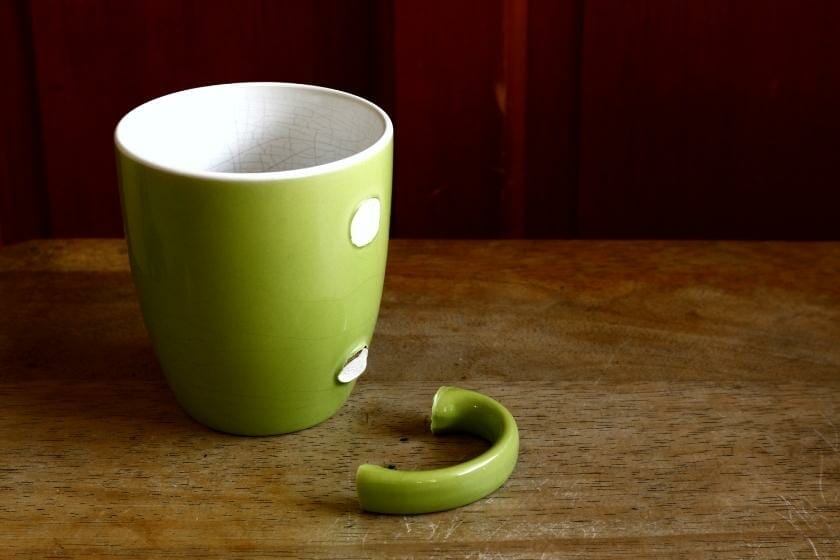
How to Make a New Handle for your Cup Of Coffee
Epoxy is a proper glue for mending broken ceramic, but you need to get the right kind.
There are many types of epoxy, including superglue and other adhesives, that use cyanoacrylate as their main ingredient. These glues are not food safe and should not be used on your mug if you want to drink from it again. If you’re using an epoxy resin tube, make sure it’s labeled “food safe.” You can also look for brands that advertise their products as “food safe.”
Once you’ve selected the correct product for the job, carefully read the instructions before using them so there are no surprises later in your project. Read all instructions thoroughly before starting work!
The next step is preparing both ceramic pieces so they’ll bond together when they’re glued together (assuming they aren’t already). In this case, I’m repairing a handle on my favorite travel mug; however, any type will do!
For thin pieces like handles or spouts where there isn’t much material left over after breaking off chunks during regular use: apply super glue adhesives, then immediately place ceramic parts back together while holding them tightly against each other until set up completely dry within 15 seconds or less because high temperatures may cause damage if left unattended long enough.
How to Fix a Badly Smashed Mug
You don’t have to buy a new coffee mug if you’ve got a dinged-up one. Here’s how to fix a badly smashed cup of coffee:
- Get the damaged mug and inspect it for any cracks or chips that need attention. If you find any, use some super glue and toothpicks (or other small pieces of wood) to fill in the crack with more glue than needed, then gently push the piece of wood into place until it has hardened; let dry overnight before using as normal.
- If there are no cracks on your cup but only a loose handle, try attaching it with a strong adhesive such as epoxy glue or Gorilla Glue (available at most hardware stores). Mix equal parts of epoxy and water in an old plastic container until smooth—don’t worry if it doesn’t look like much—and apply in layers: first, spread some around where each part will go before trying to attach them; then wait five minutes between each layer so they can become sticky enough for attachment without falling off right away! Be sure not to get any onto yourself, or else this’ll probably happen,”
Mirror Installation & Removal
If you plan to install a mirror in your coffee mug, you should use suitable glue for the job. Several types of glue can be used for this task, but only some of them will give you the results you want. First, make sure that your work surface is clean before beginning.
If it’s not clean enough, the epoxy resin may seep into any cracks or holes and ruin your mirror installation (and possibly create a hazardous situation).
You’ll also want to use food-safe epoxy resin if possible because many types of glue aren’t made with food contact in mind—and if they come into contact with food at some point during their lifespan, it could cause illness or worse!
Mirror Repair & Restoration
Mirror repair and restoration are two ways to fix broken glass coffee mugs. With mirror repair, the broken pieces of glass can be glued back together with epoxy or another adhesive.
This method works best for small cracks or chips (less than 1/2 inch in size) that do not affect the entire mirror. Restoring a broken mirror involves replacing all or part of the damaged area with new material while leaving other sites intact.
Artistry in glass is your source for antique repair in Tucson
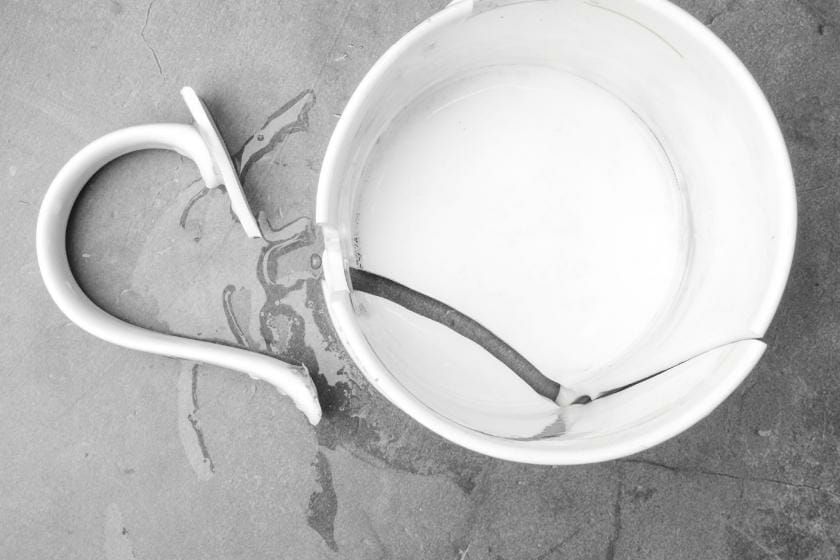
Now you have a basic understanding of fixing your broken Coffee Cup vs Mug. It’s essential to use suitable glue or epoxy for the job, and it’s also crucial to be careful when using any of these products. If you’re unsure what kind of glue or epoxy is best, ask an expert.
We hope this guide has been helpful, but please feel free to leave them in the comments below if you still have questions.
Moreover, if you ended up deciding to buy a new double-walled glass coffee mug. Then, it would help if you read our review article about the Best Doubled Walled Coffee Mugs.
